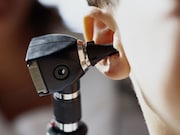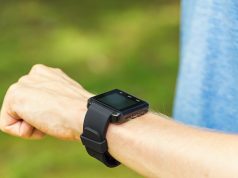By using smartphone microphone, speaker to assess eardrum mobility, app can detect middle ear fluid
THURSDAY, May 16, 2019 (HealthDay News) — A smartphone could be used as a screening tool for detecting the presence of middle ear fluid, according to a proof-of-concept study published in the May 15 issue of Science Translational Medicine.
Justin Chan, from the University of Washington in Seattle, and colleagues conducted a clinical study on 98 patient ears at a pediatric surgical center. Speakers and microphones within existing smartphones were used to detect middle ear fluid by assessing eardrum mobility. The speaker played audible continuous wave chirps into the patient’s ear canal, and the microphone collected incident waves from the speaker and reflected waves from the eardrum.
The researchers found that the area under the curve (AUC) was 0.898 for the smartphone-based machine learning algorithm. An AUC of 0.776 was obtained with commercial acoustic hardware, which requires custom hardware. The sensitivity and specificity of the smartphone-based machine learning algorithm were 85 and 82 percent, respectively, which was comparable to published performance of tympanometry and pneumatic otoscope. Testing across multiple smartphone platforms yielded similar results. When using the smartphone-based system, parents of pediatric patients (25 ears) demonstrated similar performance to trained clinicians.
“Given the ubiquity of smartphones, the system we describe may have clinically relevant applications in developing countries and rural communities where smartphone availability is rapidly growing, in primary care settings as an adjunct to visual otoscopy, or for home screening by parents as a platform to reduce health care costs,” the authors write.
All authors are inventors on a U.S. provisional patent application related to this work. Several authors disclosed having equity stakes in Edus Health, which is related to the technology presented in the study.
Copyright © 2019 HealthDay. All rights reserved.








